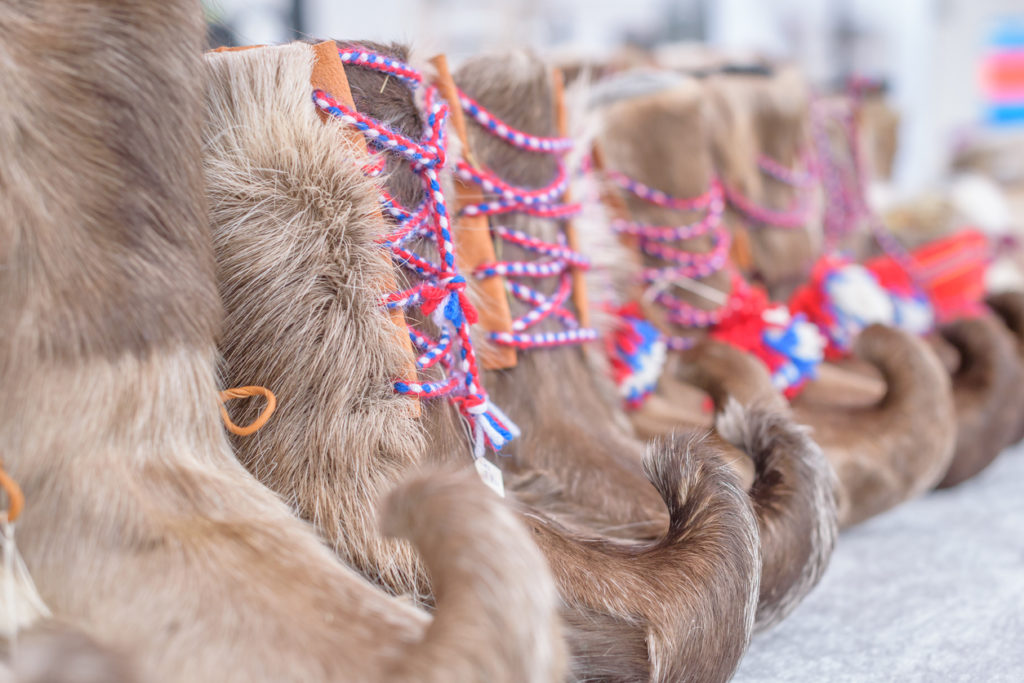How Do Sami People Preserve Their Cultural Heritage?
Deep in the heart of Finnish Lapland, the Sami people, Europe’s only recognised indigenous group, have been preserving their rich cultural heritage for centuries. This article delves into the various ways the Sami people maintain their traditions and cultural identity, offering insights into their unique way of life. At VALO Finland, we aim to provide our guests with an immersive experience of Lapland, and understanding Sami culture is a significant part of that journey.
Traditional Sami Crafts and Techniques
One of the most enduring aspects of Sami culture is their traditional crafts, known as “duodji.” These crafts are not merely decorative but serve practical purposes in daily life. Sami artisans create intricate items such as knives, wooden cups (kuksa), and woven textiles, often adorned with traditional patterns and symbols. These crafts are passed down through generations, ensuring that the skills and knowledge remain within the community.
The materials used in duodji are sourced from the natural environment, reflecting the Sami’s deep connection to nature. Reindeer antlers, birch wood, and wool are commonly used, each material chosen for its durability and availability. The process of creating these items is meticulous, requiring a high level of skill and patience. By continuing to practice and teach these crafts, the Sami people preserve an essential part of their cultural heritage.
Visitors to Lapland can witness these traditional crafts firsthand, often through workshops and demonstrations. Engaging with these activities offers a deeper appreciation of the Sami’s craftsmanship and their cultural significance.
The Role of Reindeer Herding in Sami Culture
Reindeer herding is not just an occupation for the Sami people; it is a way of life that has shaped their culture and traditions for centuries. This practice dates back to the Stone Age and remains a vital part of Sami identity. Reindeer herding involves seasonal migrations, where herders move their reindeer between winter and summer pastures, following ancient routes.
The relationship between the Sami and their reindeer is symbiotic. Reindeer provide meat, fur, and antlers, which are essential for survival in the harsh Arctic environment. In return, the Sami ensure the well-being of their herds, protecting them from predators and harsh weather conditions. This mutual dependence has fostered a deep respect for nature and the animals they rely on.
Reindeer herding also plays a significant role in Sami social structures and community life. It is often a family activity, with knowledge and responsibilities passed down through generations. Visitors to Lapland can experience reindeer herding through guided tours, offering a glimpse into this unique way of life.
Sami Language Preservation Efforts
The Sami language is a cornerstone of their cultural identity, with several distinct dialects spoken across the Sami homeland. However, like many indigenous languages, it faces the threat of extinction. To combat this, various initiatives have been implemented to preserve and revitalise the Sami language.
Educational programmes play a crucial role in these efforts. Sami language classes are offered in schools within the Sami homeland, ensuring that younger generations learn and use their native tongue. Additionally, there are adult education programmes and language immersion camps designed to encourage fluency among older Sami who may not have had the opportunity to learn the language in their youth.
Media also plays a vital role in language preservation. Sami-language radio stations, television programmes, and publications help keep the language alive in everyday use. These platforms provide a space for Sami voices and stories, reinforcing the importance of their linguistic heritage.
Rituals and Ceremonies: Keeping Traditions Alive
Rituals and ceremonies are integral to Sami culture, serving as a means to connect with their ancestors and the natural world. These traditions are often tied to the seasons and the reindeer herding cycle, marking significant events such as births, marriages, and the changing of the seasons.
One of the most well-known Sami ceremonies is the “joik,” a traditional form of song that is both a personal expression and a means of storytelling. Each joik is unique, often dedicated to a person, animal, or place, and is characterised by its haunting, melodic tones. Joiking is a way for the Sami to honour their heritage and keep their stories alive.
Other important ceremonies include the annual reindeer calf marking, where families gather to mark their new calves, and the midwinter festival, which celebrates the return of the sun after the long polar night. These events are not only cultural touchstones but also opportunities for the community to come together and reinforce their shared identity.
At VALO Finland, we believe that understanding and respecting Sami culture is essential for anyone visiting Lapland. By offering guided tours and experiences that highlight these traditions, we aim to provide our guests with a deeper connection to this unique and vibrant culture. Whether you are staying in our luxurious Ice Cube Villas or exploring the stunning landscapes of Saariselkä, we are here to help you experience the magic of Lapland in an authentic and meaningful way.
